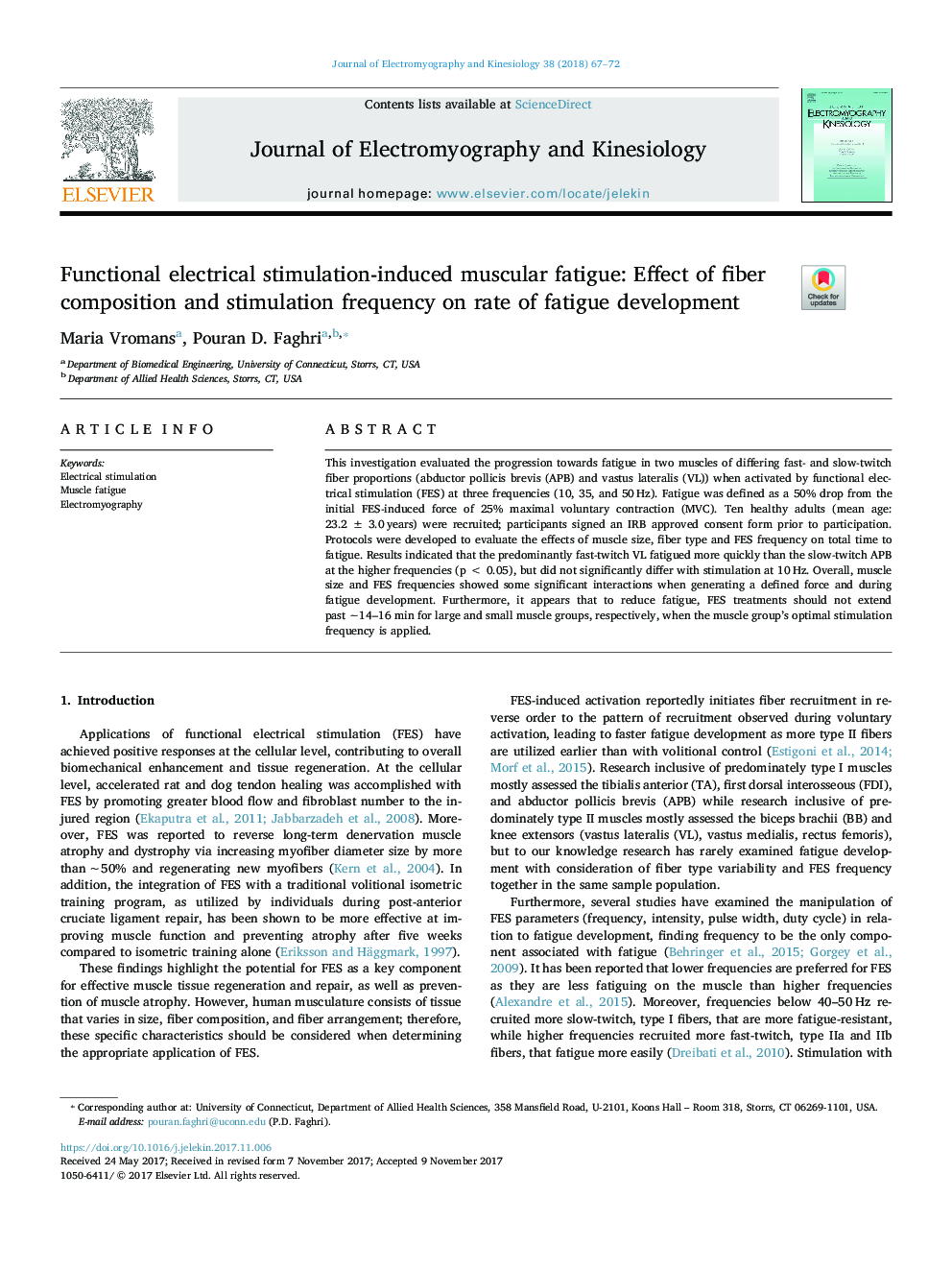| Article ID | Journal | Published Year | Pages | File Type |
|---|---|---|---|---|
| 8799816 | Journal of Electromyography and Kinesiology | 2018 | 6 Pages |
Abstract
This investigation evaluated the progression towards fatigue in two muscles of differing fast- and slow-twitch fiber proportions (abductor pollicis brevis (APB) and vastus lateralis (VL)) when activated by functional electrical stimulation (FES) at three frequencies (10, 35, and 50â¯Hz). Fatigue was defined as a 50% drop from the initial FES-induced force of 25% maximal voluntary contraction (MVC). Ten healthy adults (mean age: 23.2â¯Â±â¯3.0â¯years) were recruited; participants signed an IRB approved consent form prior to participation. Protocols were developed to evaluate the effects of muscle size, fiber type and FES frequency on total time to fatigue. Results indicated that the predominantly fast-twitch VL fatigued more quickly than the slow-twitch APB at the higher frequencies (pâ¯<â¯0.05), but did not significantly differ with stimulation at 10â¯Hz. Overall, muscle size and FES frequencies showed some significant interactions when generating a defined force and during fatigue development. Furthermore, it appears that to reduce fatigue, FES treatments should not extend pastâ¯â¼14-16 min for large and small muscle groups, respectively, when the muscle group's optimal stimulation frequency is applied.
Related Topics
Health Sciences
Medicine and Dentistry
Orthopedics, Sports Medicine and Rehabilitation
Authors
Maria Vromans, Pouran D. Faghri,
